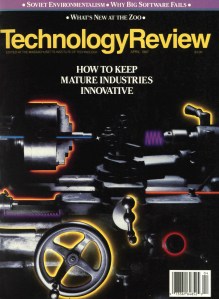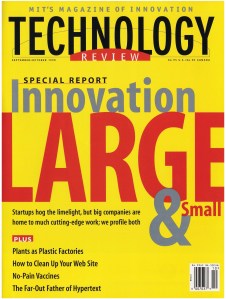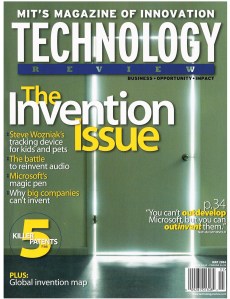From the archives: The innovator’s dilemma through the ages
April 1987

From “How to Keep Mature Industries Innovative”: Basic American ways of thinking must change. We are used to the notion that the only way to encourage innovation is to remove obstacles to competition, including private agreements by firms to limit their freedom of action. Recently, economists, public officials, and business managers have begun to concede that the idea of competition as unlimited freedom can be a barrier to innovation. Through joint ventures and participation in collective research efforts, firms are learning that cooperation can be crucial in developing profitable ideas. States such as Michigan and Massachusetts have instituted programs aimed at revitalizing the automobile-parts, cutting-tool, and apparel industries. These programs are helping the state governments understand how to foster the necessary cooperation among firms, and between management and labor.
September/October 1998

From “Bell Labs Is Dead, Long Live Bell Labs”: Basic research has not disappeared, as the critics claim. Scores of scientists continue to pursue dreams that may not pay off for decades … [Astrophysicist Tony] Tyson says the dynamic for discovery may actually be better now than at any time since the 1950s. An increased focus on relevance has put short-term pressures on researchers and made it harder to pursue “pure” science. However, he states, “I think it’s healthy to have this tension. Otherwise you’re just sitting in the Ivory Tower doing nothing for anybody. It really does help to be immersed in the needs of the corporation at the same time you’re trying to make some new discovery. If you’re immersed in other cross streams of technology, of ideas, of demands ... that’s a very rich environment for completely new ideas to spring forward.”
May 2004

From “Sparking the Fire of Invention”: Nathan P. Myhrvold has no interest in competing with Microsoft—but he does mean to challenge the very method of innovation practiced at the company he left four years ago. The 44-year-old founder of Microsoft Research and former chief technology officer of the Seattle giant argues that virtually all corporations, even wealthy ones, lack motivation to pump money into projects outside their existing product lines. In other words, they tend to discourage invention, the often subversive effort to isolate new problems and generate unexpected solutions. “Invention is a side effect [ at corporate labs], not the focus,” Myhrvold says. “When it comes to mission versus invention at most companies, mission wins.”
Yet this very reluctance has opened a world of opportunity, Myhrvold believes. “You can’t outdevelop Microsoft,” he says. “But you can outinvent Microsoft.”
Keep Reading
Most Popular
Large language models can do jaw-dropping things. But nobody knows exactly why.
And that's a problem. Figuring it out is one of the biggest scientific puzzles of our time and a crucial step towards controlling more powerful future models.
The problem with plug-in hybrids? Their drivers.
Plug-in hybrids are often sold as a transition to EVs, but new data from Europe shows we’re still underestimating the emissions they produce.
How scientists traced a mysterious covid case back to six toilets
When wastewater surveillance turns into a hunt for a single infected individual, the ethics get tricky.
Google DeepMind’s new generative model makes Super Mario–like games from scratch
Genie learns how to control games by watching hours and hours of video. It could help train next-gen robots too.
Stay connected
Get the latest updates from
MIT Technology Review
Discover special offers, top stories, upcoming events, and more.